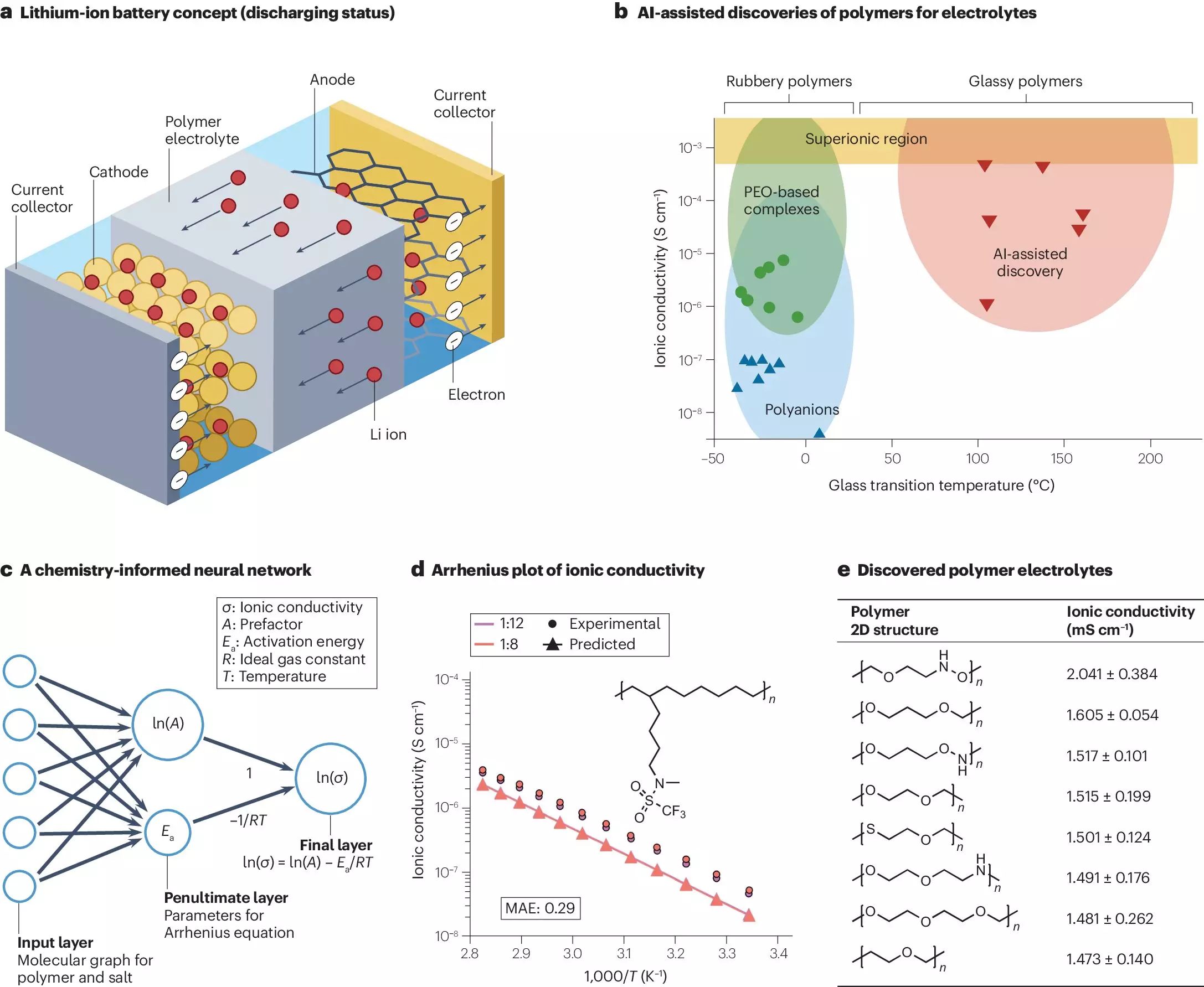Polymers play a pivotal role in modern life, ranging from household items like Teflon-coated cookware to advanced applications in 3D printing. The diversity of polymers—like Nylon and Kevlar—reflects their various functionalities across numerous industries, including energy storage and environmental technology. As the search for innovative polymers continues, researchers are increasingly turning to artificial intelligence (AI) for assistance in accelerating the discovery process. Notably, Rampi Ramprasad and his team from Georgia Tech are at the forefront of this field, employing AI-driven methodologies to revolutionize polymers and their applications.
Ramprasad’s research group has pioneered algorithms that can facilitate the quick identification of polymer properties and formulations, fundamentally changing how materials are developed. Their approach starts with identifying specific property requirements tailored for each application. Using existing data sets, machine learning (ML) models then predict the outcome while generating new polymer candidates. The iterative cycle of testing these predictions in the lab allows for a feedback loop that continually enhances predictive accuracy. This methodology not only supports the creation of innovative materials; it also fosters an environment of collaboration, with teams across various disciplines working together to refine their discoveries.
While the application of AI in materials science presents significant opportunities, it is not without challenges. The efficacy of AI predictions hinges on the quality and diversity of the initial data. With rich data sets being essential for training ML models, researchers face the daunting task of ensuring thorough and accurate data collection. Additionally, crafting algorithms that can yield chemically plausible and synthesizable materials poses a complex hurdle. Once the hypothetical materials are designed, demonstrating their practical applicability in laboratory settings—and ultimately in broader industrial contexts—remains a formidable challenge that requires extensive verification and experimentation.
The collaborative nature of this research underscores the interdisciplinary approach to materials discovery. Ramprasad’s team often partners with experts in various fields, including chemical and biomolecular engineering, to test the synthesized materials. Professor Ryan Lively, a regular collaborator, emphasizes how AI-infused tools expedite their research. “By utilizing machine learning models, we are able to explore innovative concepts prior to dedicating substantial resources to lab work. This not only saves time but also enriches the research process,” he notes. The incorporation of such tools into everyday research practices embodies the transformative potential of AI in overcoming traditional limitations faced by material scientists.
Recent publications by Ramprasad’s team reveal significant strides in various sectors. One standout contribution, detailed in Nature Communications, highlights the design of innovative polymers specifically for capacitors—essential devices in electric and hybrid vehicles. Striking a balance between high energy density and thermal stability, this new class of materials marks a advances in the capabilities of electrostatic storage devices. The collaboration with the University of Connecticut exemplifies how academic partnerships can lead to practical outcomes while pushing the boundaries of conventional science.
The research’s impact goes beyond academia; industry participation amplifies the relevance and application of AI-driven materials development. The collaborative efforts extend to major corporations such as Toyota and General Electric, indicating a growing acknowledgment of the transformative possibilities inherent in this technology. To further bridge the gap between research and commercial application, Ramprasad co-founded Matmerize Inc., a startup dedicated to developing cloud-based software for polymer informatics. This platform, already in use across several industries, simplifies the material design process while significantly reducing costs.
The intersection of AI and polymer science is carving pathways toward transformative innovations that promise to reshape multiple sectors. The ongoing work at Georgia Tech illustrates not only the potential for new materials that meet the rigorous demands of modern applications but also the collaborative spirit that fuels scientific progress. As the field evolves, continuous iteration and cooperation will remain paramount, enabling breakthroughs that could redefine how we understand and utilize materials in an increasingly complex world. In driving these advancements, researchers like Ramprasad are not merely discovering new polymers; they are pioneering a paradigm shift in material sciences, fostering a future that could unlock unprecedented opportunities.


Leave a Reply